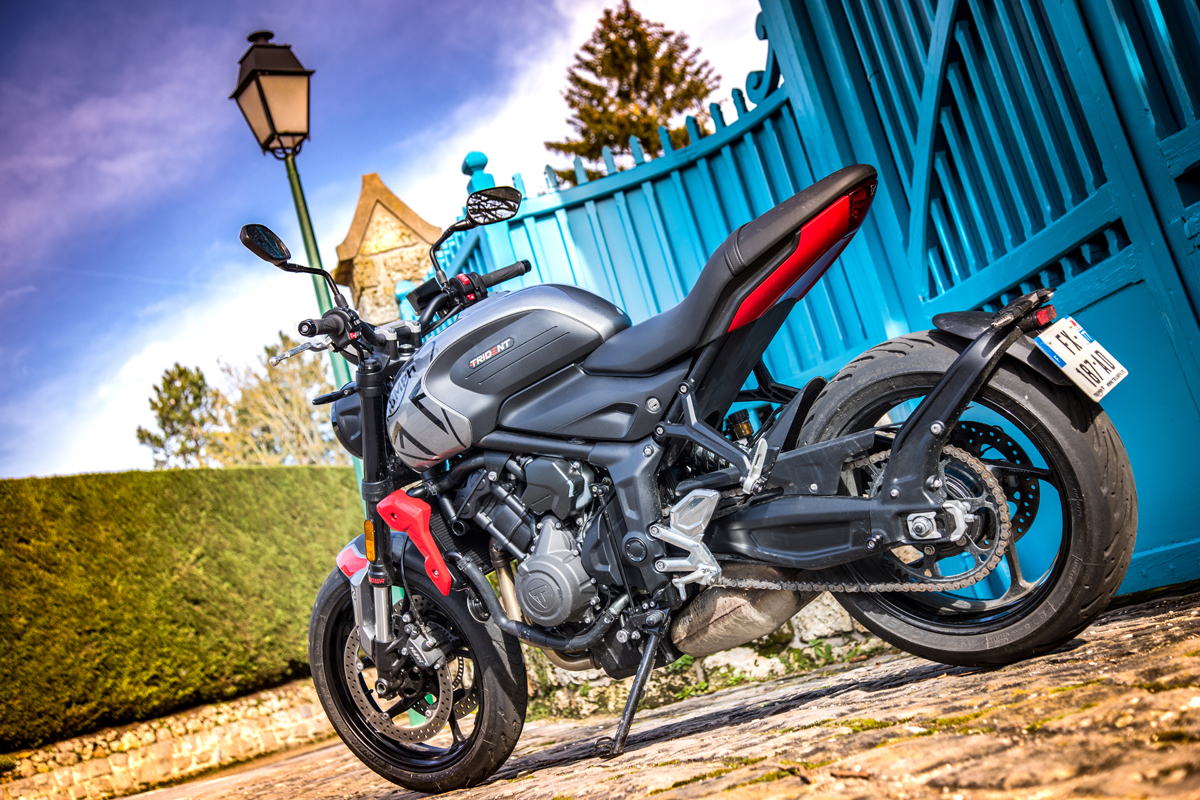
Mid-capacity naked bikes are perfect for beginners, commuters, or anyone that’s looking for maximum bang for their buck. Our man in Europe managed to get his hands on Triumph’s new middleweight, the Trident 660, for a full week of commuting and a trip into the countryside.
Triumph surely wants to appeal to motorcyclists looking for their first brand new bike with the Trident 660. Their target is very clear: when it comes to the perfect all-rounder, cheap, dependable, reliable, and fun bikes like the Kawasaki Z650 and Yamaha MT-07 offer the best deals. (Along with bikes like the Honda CB650R and Suzuki SV650, which aren’t imported into South Africa.)
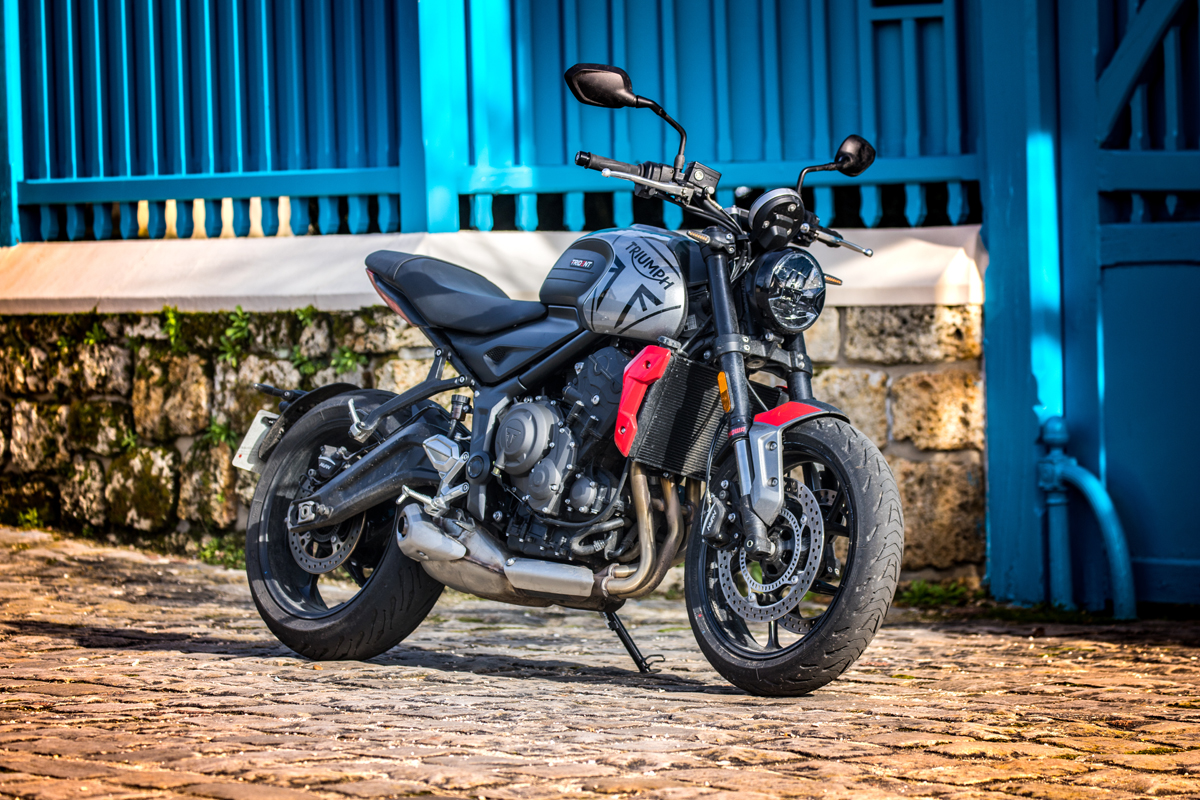
With the Trident 660, Triumph definitely wants a (big) piece of that cake. The recipe is simple: Triumph’s punchy in-line triple is known for being lively, and the brand’s well-established reputation for build quality goes a long way. Add some appealing design and great technology, and off we go.
But first, you may be wondering why this new bike is called the ‘Trident’ which is actually a name with a deep history. Triumph sells a lot of modern classics these days, but let’s remember that, at the end of the 60s, they didn’t trust their Bonneville range that much. They wanted to drop the good ol’ twin for a brand new generation of three-cylinder motors, so they released the Trident T150.
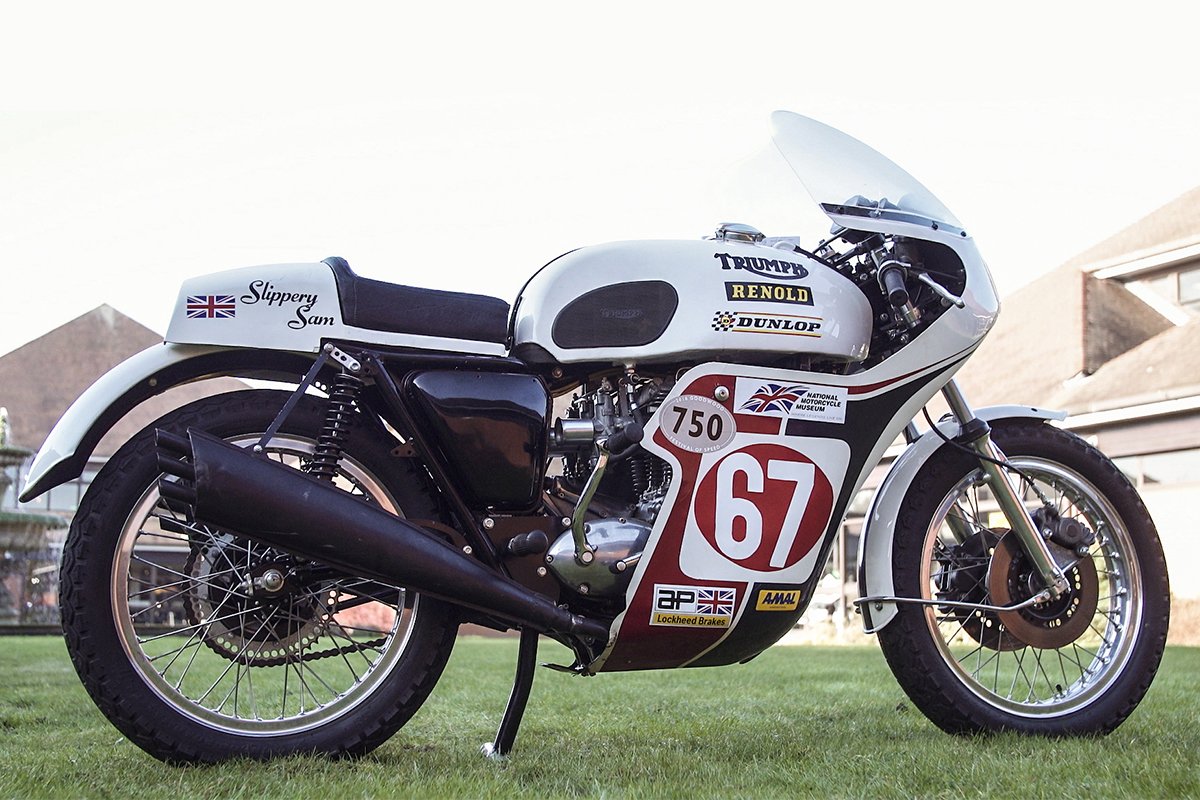
Its commercial success was not exactly on par with expectations, but the Trident T150 had a great racing career nonetheless, with Daytona and TT victories. When Triumph launched their great comeback in the early 90s, they also choose the Trident name for their naked bike range. The Trident 750 and 900 were produced from 1991 to 1998, and did well to re-establish the brand.
The ‘third gen’ Trident is quite a surprise: despite its roundish tank, the bike has no apparent link to the past. It’s a nimble, compact, good looking and contemporary naked bike, with great details—like the rear light that’s integrated below the seat unit.
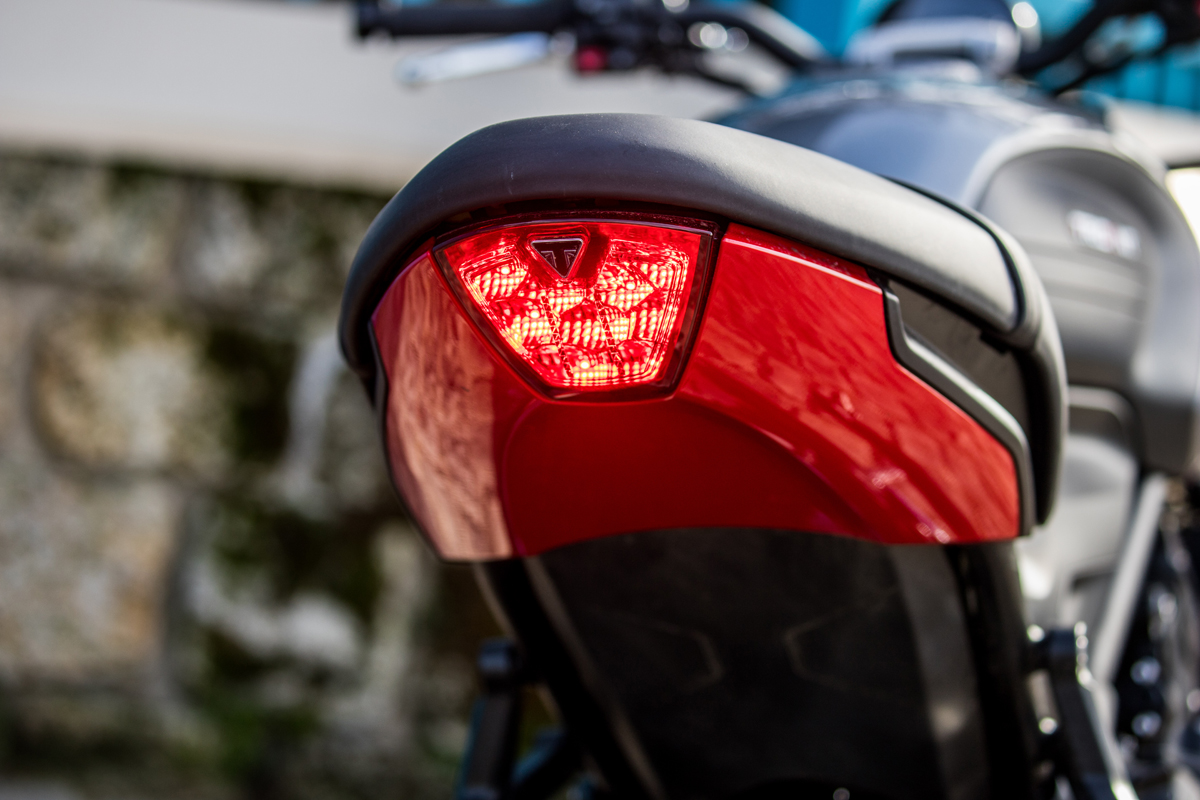
We keep praising the fit and finish of Triumph’s latest generation of machines—and the Trident is on par with the rest of the range, despite being a more accessible offering. The cables are all neatly routed, and there are many small details, such as Triumph logos on the headlight, fuel cap cover or the handlebar support. No doubt: the built quality is far better than on the Yamaha MT-07 or Kawasaki Z650, and nearly on par with the Honda CB650R.
The round digital speedo looks neat, and is navigated via an easy-to-use four-button cross arrangement on the left side switchgear. The Trident features Bluetooth connectivity too, including turn by turn navigation, which is a stand-out feature in this segment.
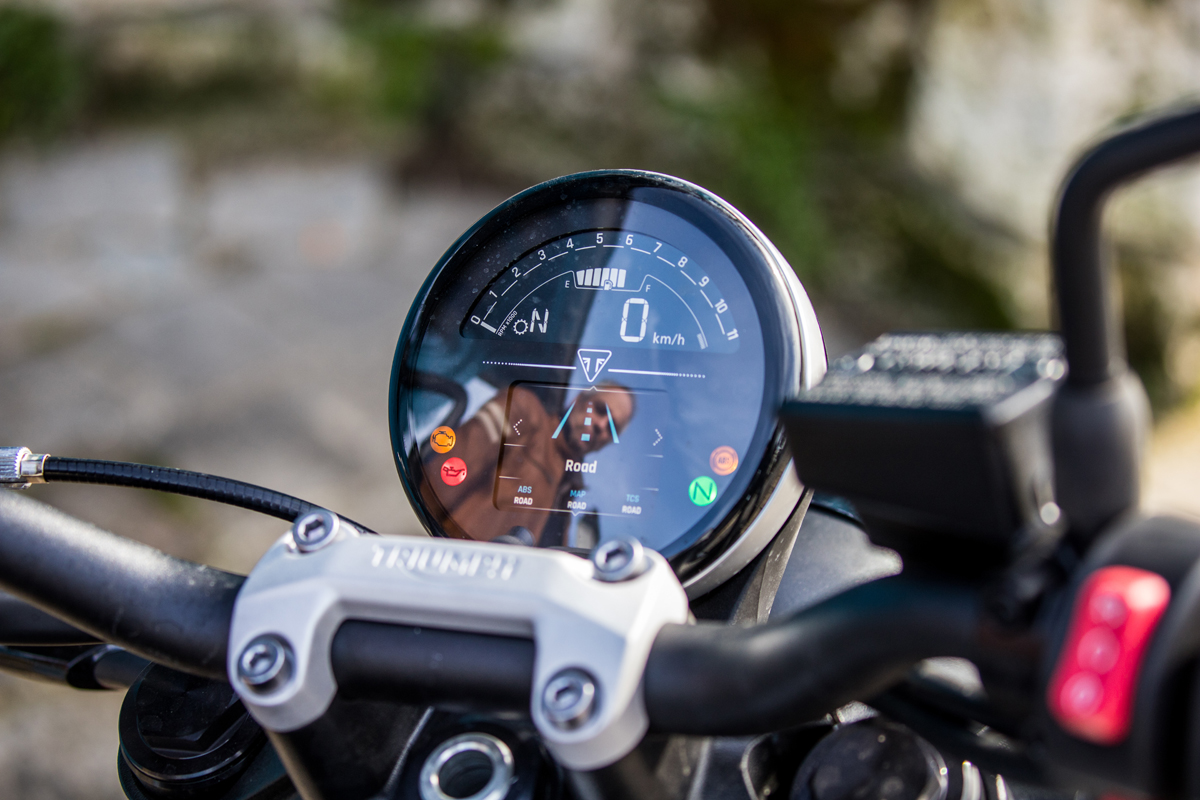
The Trident is rather on the compact side. A slim fuel tank and 805 mm seat height allow 1,60 m riders to have their feet comfortably on the ground. Ergonomics are rather neutral, so it’s easy to feel very at home on the Trident. The foot pegs are not too high nor too far back, and the handlebar is a usable width. The weight is also reasonable, with a curb weight of 189 kilos (on paper, although we weighed it at 193 kilos). That stacks up well against the 184 kg of the MT-07, with one less cylinder, and the 203 kg of the Honda CB650R, with one cylinder more. For sure, the Trident is an ideal commuter.
While the 660 cc capacity ties into a worldwide strategy (in Australia and New Zealand, it’s the limit for new bikers), the Euro 5 Trident engine doesn’t have much to do with the older Street Triple S 660 unit. Not only are the bore and stroke different (76 x 48,5 mm on the Street Triple, but 74 x 51,1 mm on the Trident), but the pistons, crankshaft, valves, gearbox, and the entire intake system are new.
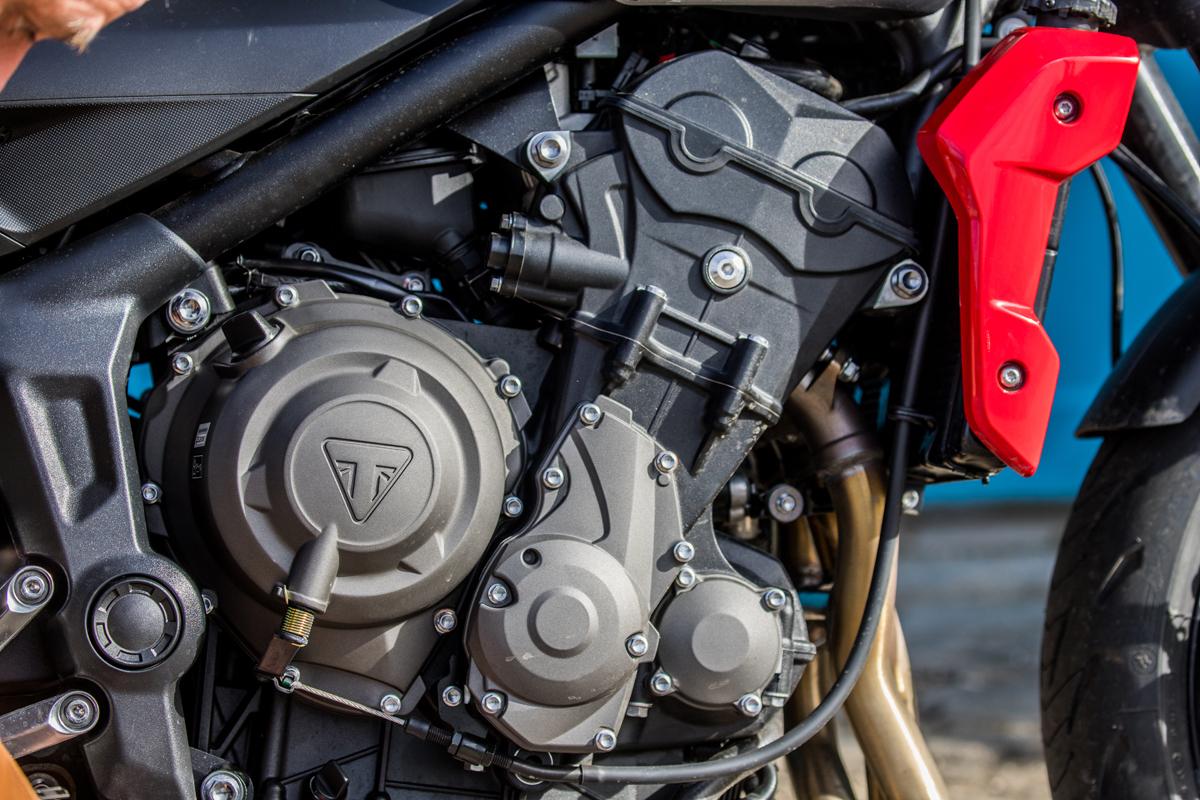
Triumph’s goal was to make the engine smoother and torquier. Power output is now 81 hp at 10,250 rpm, and while the torque is 64 Nm at 6,250 rpm, there is a flat torque curve. So 90% of the torque is always available from 3,600 to 9,750 rpm. The ride-by-wire throttle comes with two modes, Road and Rain, with the same level of power, but a gentler throttle response. Reliability is key here, so Triumph conducted more than 800,000 test kilometres, including 1,500 flat out on a race track. The Trident needs a service every 16,000 km.
Ultimately, the Triumph Trident 660 is a lot of fun for R150,000. I had the chance to ride the Trident for a week of my daily commuting around Paris. And I took it for an 800 km trip in the remote and charming French countryside, in a region called ‘The Morvan’ (Do a Google image search for ‘Lac de Panneciere’ or ‘Chateau-Chinon’ to get an idea).
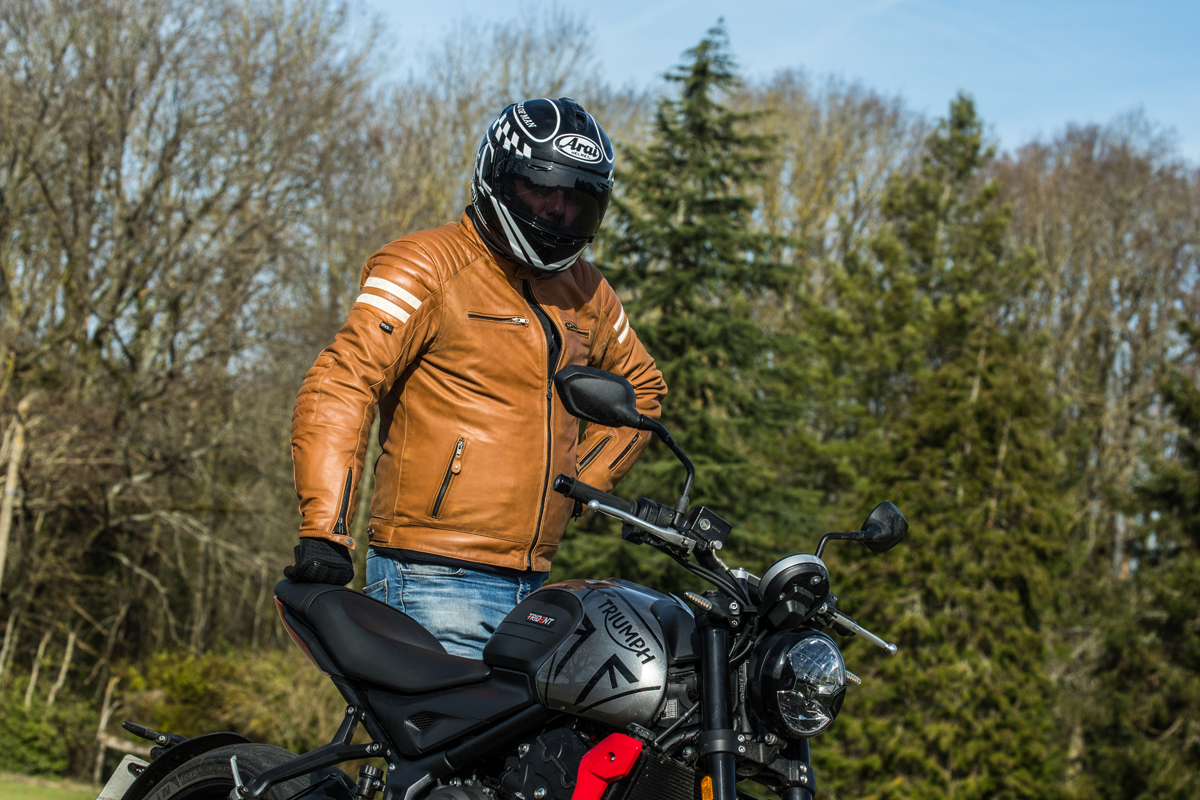
In traffic jams, the engine’s compliant enough to allow 6th gear at 40 km/h and 2,000 rpm smoothly. While on the open road leaving the French capital, the Trident tackles the open road with a certain ease. The in-line triple handles long highway cruises with no vibrations, and at more-or-less legal speeds, fuel consumption stays under the 5 l per 100 km bar. Of course, there is no wind protection, but the riding position allows you to lie a bit forward and not suffer too much from the speed. The seat is okay too, and not too firm.
Obviously, the ride is ten times more intense once on small and twisty B-roads. Here, the Trident demonstrates once again that it will appeal to all kinds of bikers. Easy to deal with, easy to handle, easy to trust, the British bike loves every part of the road—from hairpins to high speed sweeping corners. The chassis is predictable and stable, and the excellent Michelin Road 5 tyres create much confidence. They’re especially good in the cold yet sunny French winter, where the tar is cold and damp patches in the shade can sneak up on you.

The 81 horses on offer are enough to have fun with, with some character between 7,000 and 10,500 rpm, along with the typical and very enjoyable engine note. Gear changes are fast and precise, although the feeling is sometimes a bit notchy.
The brakes and rear shock are just average—meaning just on par with the segment standard. The front brakes use twin Nissin callipers, and although the power is okay, the initial bite is a bit shy and the feeling is a bit vague. I have the same complaints about the rear shock, which lacks progressiveness and is a bit on the firm side.
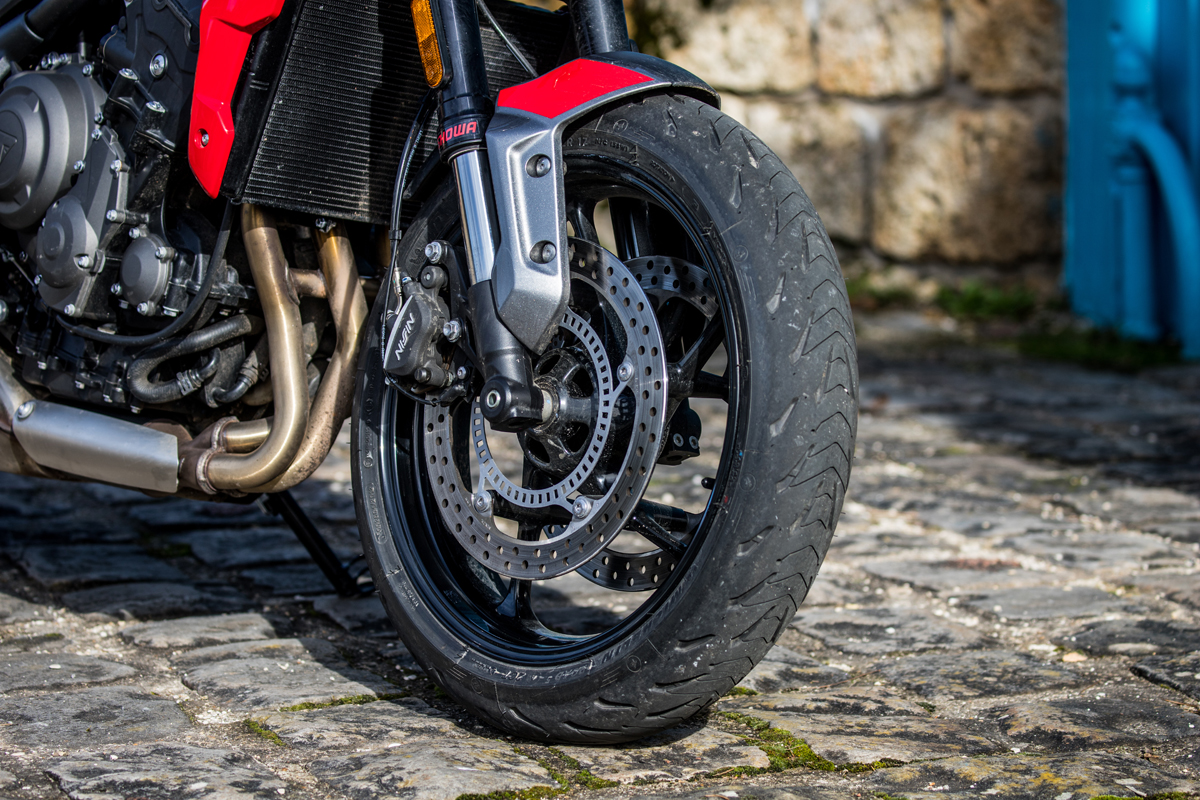
Ultimately, the Honda CB650R has better suspension and brakes, but its four-cylinder engine is a bit more peaky, and you need to ride one gear lower on twisty roads to keep up the pace.
And more importantly, you can’t get the Honda in South Africa—leaving the Triumph Trident 660 open to rule the roost. Combine its handling with its looks, engine note and level of equipment, and it’s hard to ignore.
